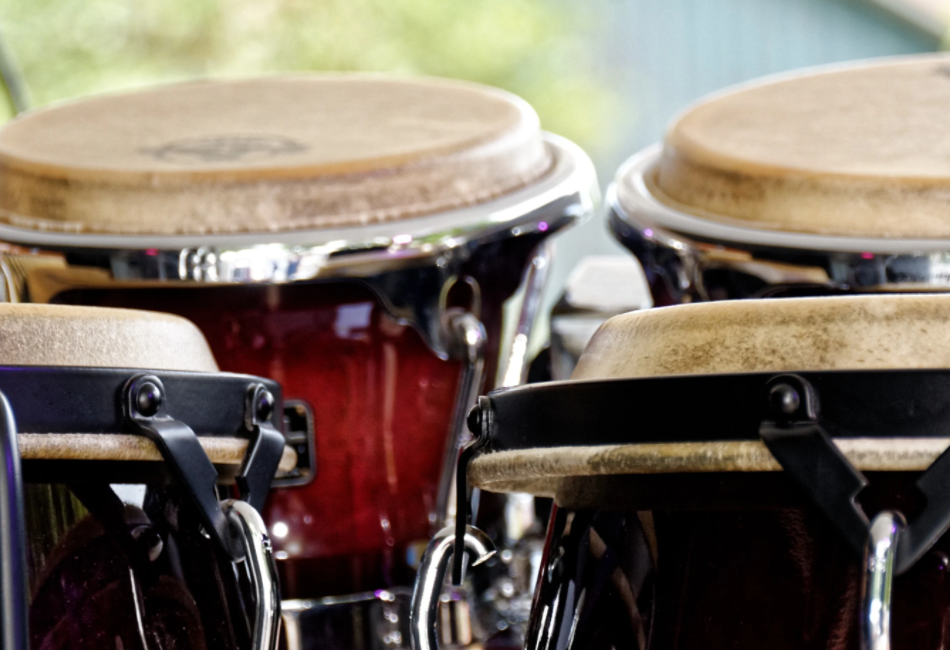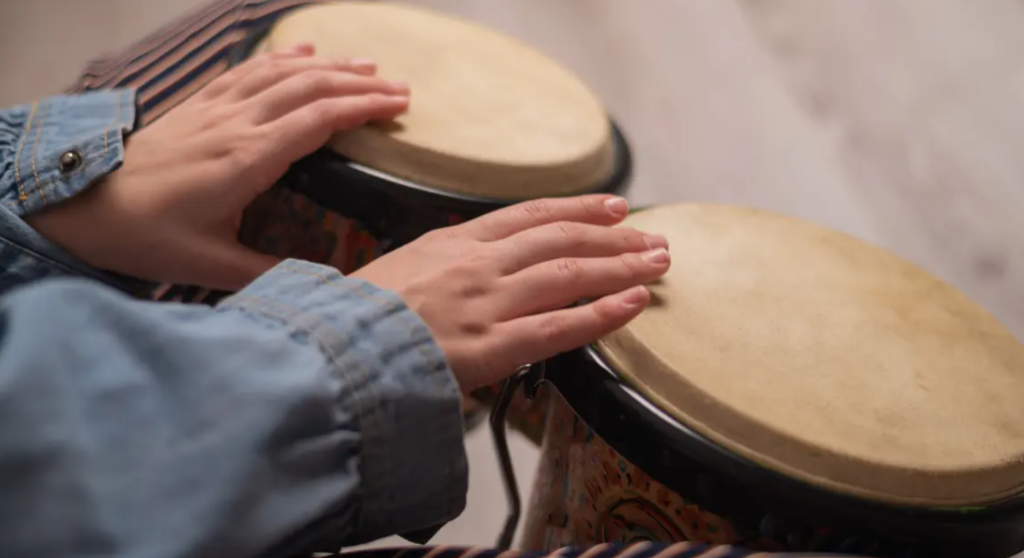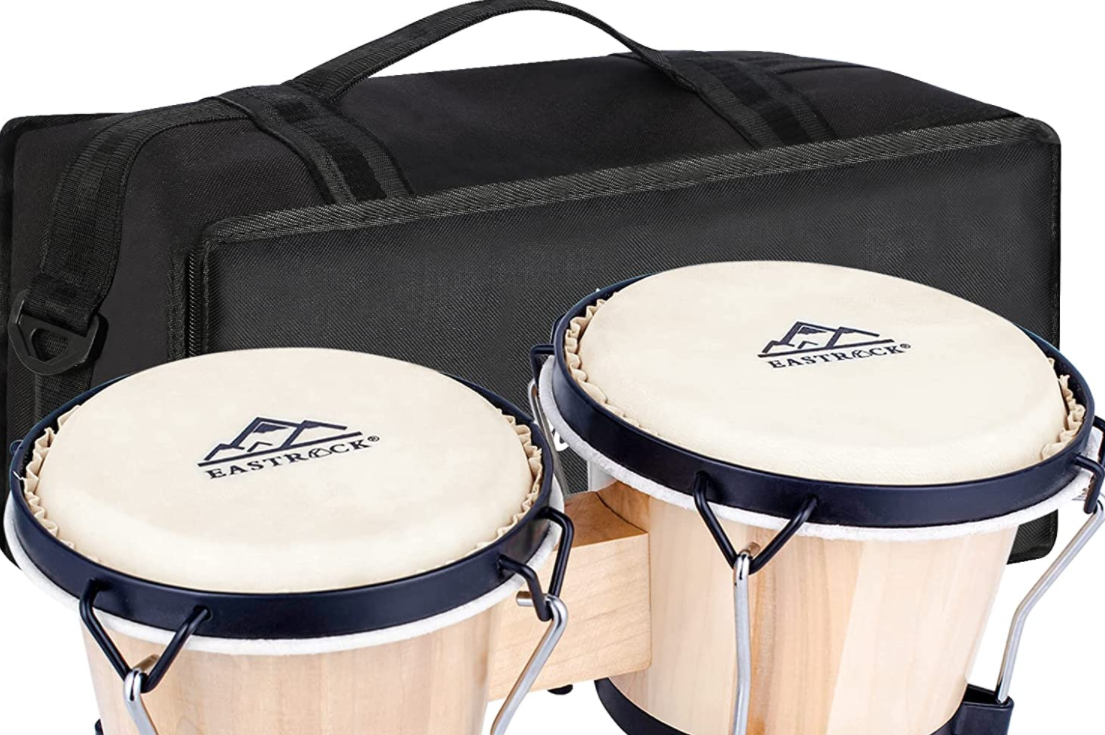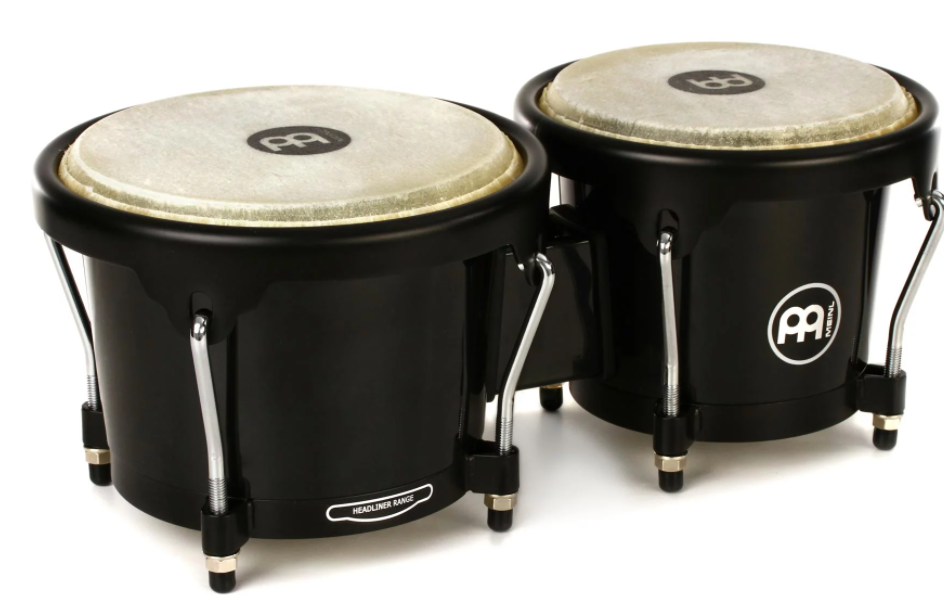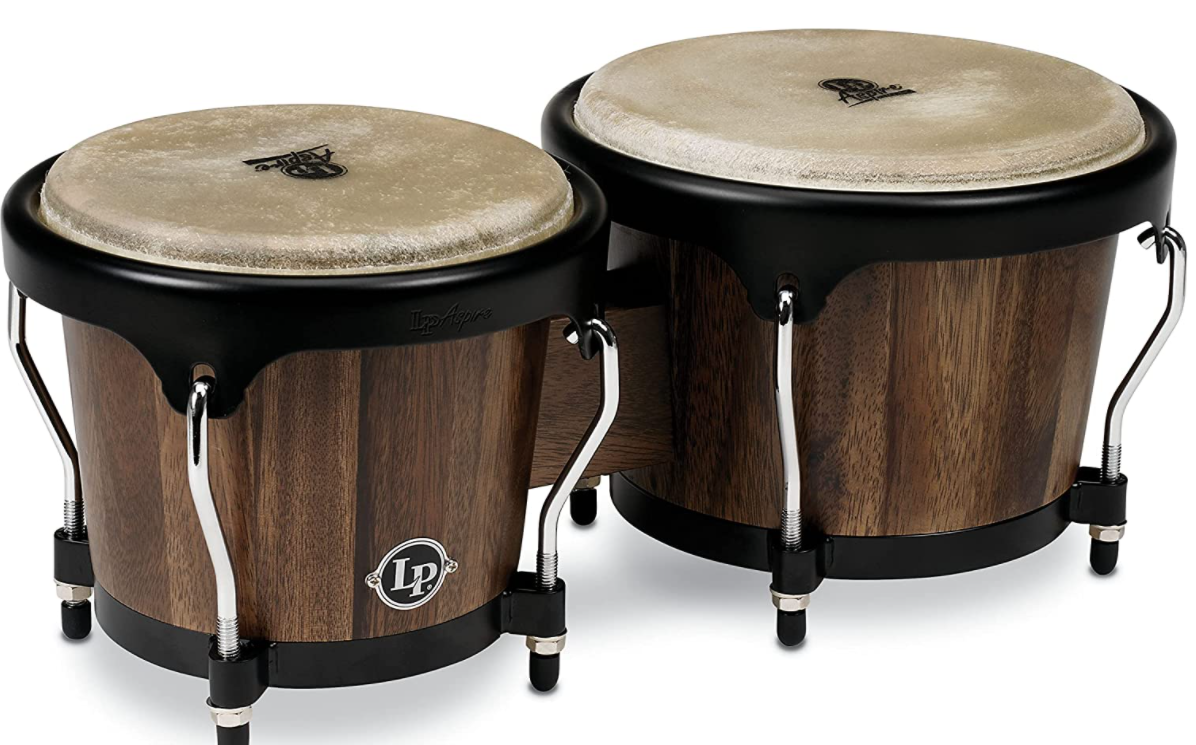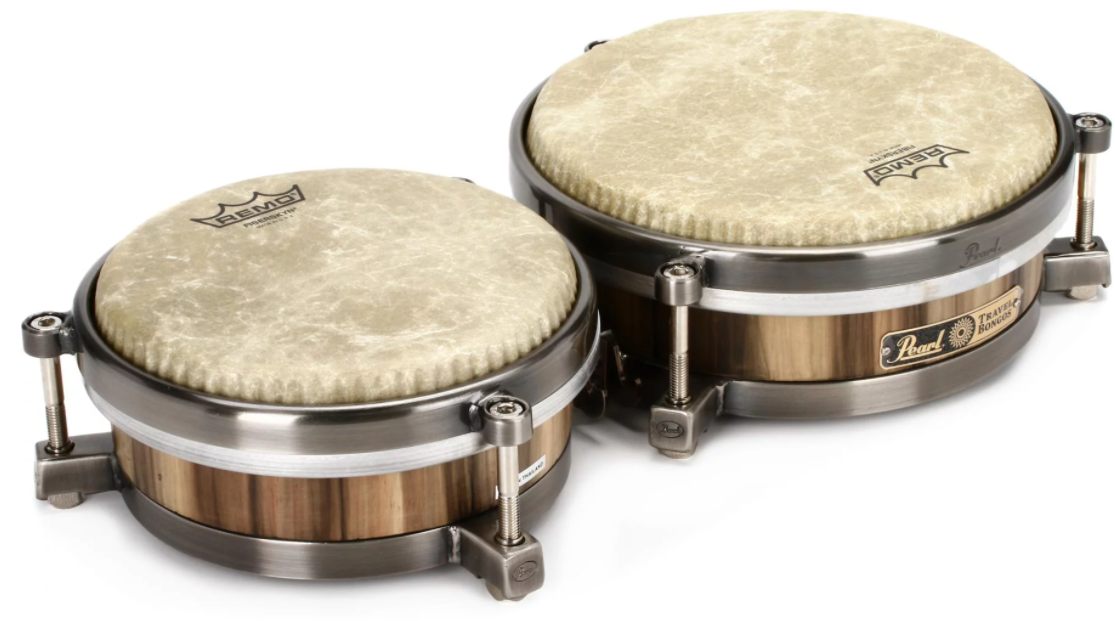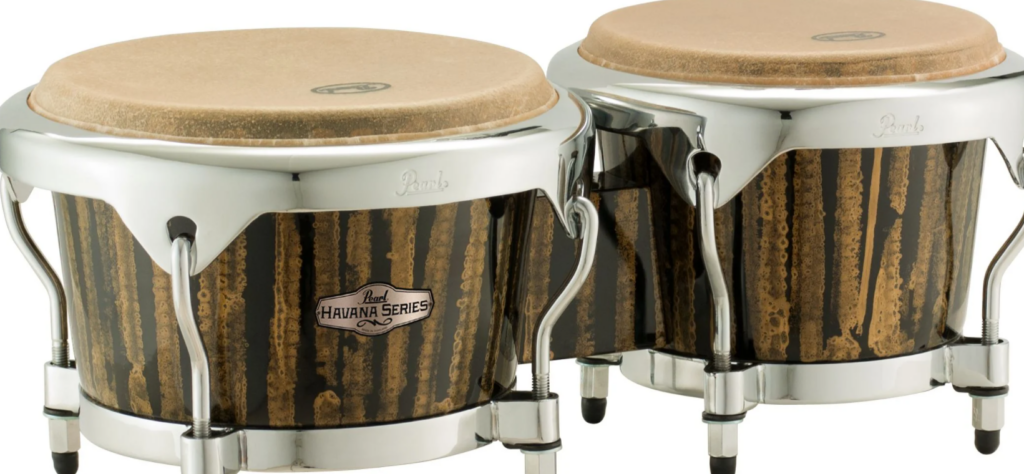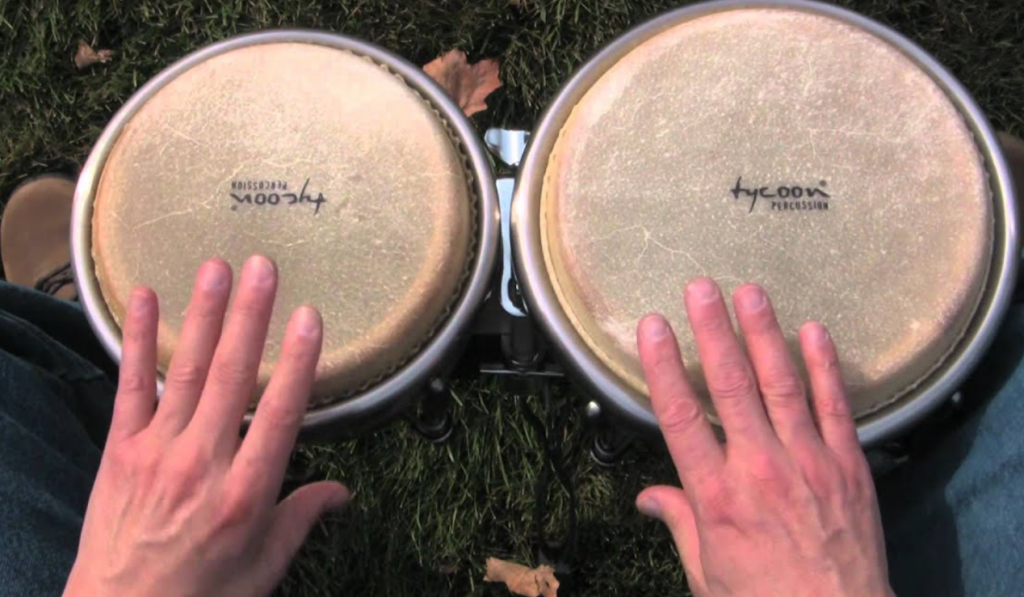Bongos are iconic instruments in the percussion category. Whether you’re a drummer, percussionist, or a college student looking for good vibes, you’d know that a great set of bongos can go a long way.
While many sets of bongos are fairly inexpensive, some of them cost several hundred dollars. What’s the difference between cheap and expensive bongos? I’m going to explain that along with several other things in this ultimate bongo guide. After reading it, you’ll know how to find the best bongo drums as well as understand all the parts that are involved in their construction.
Bottom Line Upfront: To find the best bongo drums, you need to establish a budget. Once you know how much money you’re willing to spend, you’ll have a better platform for choice. When buying bongos, you’ll need to see whether they can be tuned, what skins are used, and how the shells have been constructed.
Once you’ve found a pair of bongos that rank highly in all those areas, you can buy them and know that you’ll be happy with your purchase. The brands that typically make bongos that tick all those boxes are Pearl, Latin Percussion, and Meinl Percussion. If you get a pair of bongos from those companies, they’re guaranteed to be a good option.
Bongo Buying Guide
What are Bongos?
Before we get into the nitty-gritty, it’s vital to know what exactly bongos are. I’ve had too many conversations with people where they were talking about bongos to eventually find out that they actually meant djembes or congas.
Since bongos are the most famous hand percussion instrument, it’s very easy for people to simply identify every piece of hand percussion with a skin as a bongo.
In actuality, bongos are small drums that are always connected with a bridge. You rarely get single bongo drums as they come in pairs.
Apart from the connecting bridge, another way to identify a pair of bongos is to see their size. They’re one of the smallest hand drums, and they’re small enough to hold in your lap while playing.
Price
Moving on to the buying guide for bongos, the first thing you should take note of is price. This will be the most defining factor, and it will provide you with different category options. Some bongos are incredibly cheap while others may seem exorbitantly expensive.
They’re priced like this for good reasons, and the price tag will give you an idea of their quality. Here are the three price categories that you can see different bongos fall under:
- Entry-level bongos
- Mid-tier bongos
- Professional bongos
As we move on in this buying guide, you’ll see how the higher you go in the price category, the more the bongos will offer in terms of quality and features.
While that may seem obvious, it’s what exactly gets improved that isn’t so obvious. Let’s move on to size options.
Size
The size of a drum plays an important role in how it sounds. The larger a drum is, the deeper the tone it will produce. The smaller it is, the higher-pitched the tone will be.
There are two size factors to take into consideration – diameter and height. When it comes to height, most bongos are 8” tall. This makes them small and light enough to hold in any seating arrangement. Other drums usually have varying heights, but both bongos in a pair have the same height, making them more comfortable to play.
The diameter of each bongo is where the difference comes in. You’ll always have one large and one small bongo. The small bongos typically have a diameter somewhere between 6” and 8”. The larger ones have diameters between 7” and 9”.
When choosing bongos to buy, you should decide which sizes you want. Other than affecting the pitch of the tones they produce; the sizes also affect how they feel. Larger bongos will feel slightly looser on the skin.
Tuning Capabilities
All decent bongos should be able to get tuned. To tune them, you need to take a small wrench and tighten the lugs at the bottom of the drums. The tighter those lugs are, the higher-pitched the bongos will sound. You need to tighten them quite tightly to get a sharp bright sound.
A problem you may run into with cheaper bongos is that tightening those lugs too tightly will snap the head. This doesn’t happen as often with higher-quality bongos.
Also, you may come across bongos that can’t be tuned at all. I’d suggest staying clear of those entirely.
Skins
Not all bongos have the same skins attached to their surfaces. The type of skins a set of bongos has is something that you need to look out for when choosing a pair for yourself. While it’s commonly known that they’re made from different animal skins, some brands use synthetic skins that are made to feel the same.
Whichever type of skin you get, know that they all have slightly different textures. I’ve played on a pair of bongos before that I absolutely hated the feeling of. I realized after that it was because they had a certain type of rawhide that my fingers weren’t a fan of.
Here is a list of skin names that you may find on bongos:
- Rawhide
- Synthetic Fiberskyn
- Natural cow skin
- Natural
- Buffalo
- Hembra
Shell Construction
Skins can easily be changed. If you don’t like how the bongos sound or feel, buying a new set of skins and replacing the old ones is a relatively simple process. The shell construction, on the other hand, can’t be changed. That’s what you’re stuck with after buying a set of bongos.
So, take note of what the shells are made of, and decide if it sounds attractive to you or not. Like drum kit shells, different shell materials give different timbres. Varying woods will be used to make the bongos, and those woods all have distinct tonal qualities. When buying a pair, look to see what qualities each particular wood brings out from the bongos.
Here is a list of potential woods used to make bongo shells:
- Ash
- Oak
- Pine
- Jamjuree
- Rubber Wood
Some bongos will be made from other materials such as fiberglass or plastic. Plastic bongos will always be quite inexpensive, whereas fiberglass is a pricier material to have.
Visuals
This particular aspect is nowhere near as important as the others, but I think visuals should have a role to play in your choice of bongos. This is where your personal expression comes in as you get to choose how the bongos look.
Do you want a natural wood aesthetic? Does the sound of artistic patterns around the bongos entice you to buy them? Maybe a simple color would be a better choice. Music and sound are everything, but aesthetics is always an extra thing to think about, especially if you’re going to perform with the bongos.
Brand
There are several fantastic brands that make all kinds of percussion. However, I’ve found there to be a few brands that always make bongos that you can trust. I can guarantee you that whatever you buy from these brands will be a good product. The brands also have excellent customer service for their instruments.
Here are their names:
- Latin Percussion
- Pearl
- Meinl Percussion
If you find a pair of bongos from a brand other than these, I suggest doing as much research as you can to ensure that it’s a high-quality purchase. Choosing from one of these brands is going to be your best bet, though.
Buying Guide Wrap Up
So, now that you have all the points to consider, you can select the best bongos for whatever setting you need them for. Here’s a quick recap of the process that you should follow:
- Step 1 – Decide how much you’re willing to spend.
- Step 2 – Choose an appropriate bongo size.
- Step 3 – Look for bongos with the heads that you’d like.
- Step 4 – Check how the wood construction affects the sound of the bongos.
- Step 5 – Get bongos that you think look amazing.
- Step 6 – Know that you can trust bongos from Latin Percussion, Pearl, or Meinl Percussion. Do some more research on your chosen bongos if they’re from a different brand.
- Step 7– Make sure the bongos you’re getting can be tuned.
Now that we’ve gotten to this point, we can look at some buying options. I’ve found 7 different pairs of bongos that fit into the varying price categories. I’ll explain why I’ve chosen them, and I’ll elaborate on who they’ll be good choices for.
Entry-Level Bongos
EastRock Bongo Drums
These EastRock Bongo Drums are the most affordable bongos that I could find that still sound relatively decent. They’re the perfect option for anyone looking for a set of bongos that isn’t interested in buying something from the big brands.
If you just need something to play around a campfire or get as a gift for your child, they’re an ideal option.
While the clear downside is that they don’t sound as good as pro bongos, the one issue I have with these is that the edges of the skins have a bit of cardboard sticking out. This ruins a bit of the clean aesthetic that most bongos are known to have.
Pros
- Incredibly affordable
- Great for hobbyists who want to play around campfires
- Good option for children
Cons
- Tones aren’t rich
- Scrunched up cardboard near the edge of the skins is very visible
Mid-Tier Bongos
Meinl Percussion Journey Series Bongos
If you want an affordable pair of bongos from one of the three reputable brands, the Journey Series bongos from Meinl Percussion are an awesome option.
These bongos are made from environmentally friendly plastic that gives the shells a strong piercing sound. They have buffalo drum heads, and the sizes are 6.5” for the small head and 7.5” for the larger one.
I found that they don’t sound incredible out of the box. However, tightening the lugs will lead to a better and more pleasant sound.
Pros
- Relatively affordable option from Meinl Percussion
- Made from environmentally friendly plastic
- Buffalo drum heads
Cons
- Sound isn’t great straight out the box
Latin Percussion Aspire Jamjuree Bongos
The Aspire Jamjuree bongos from Latin Percussion are a bit more expensive than the previous ones, but they still sit in the intermediate price range.
These bongos have a classic wooden aesthetic that I’m in love with. They project a lot more, having a much louder tone. I’d say the sounds are slightly better than the Meinl Journey bongos, but they’re still not as good as the bongos that pros use.
They have jamjuree shells and rawhide skins, but the selling point for me with these is how they look!
Pros
- Very loud
- Amazing wooden appearance
- Great option for hobbyist bongo players
Cons
- Tonal quality isn’t as rich as some people may want
Professional Bongos
Pearl PTB785 Bongos
I’ve put the Pearl Travel bongos here as they’re one of the most unique sets of bongos on the market. While most bongos are between 8 and 10-inches tall, these have a depth of only 3.5”. They’re the shortest bongos that I know of, and they’re excellent for portability.
Somehow, they still sound very similar to regular bongos. However, their tone is slightly sharper thanks to their shorter depth.
I’d say these are specialty bongos, fit for seasoned bongo players that want to add a unique pair to their collection.
Pros
- Short depths, making them very unique
- Strong sharp tones
- Interesting appearance
Cons
- Expensive
Pearl Havana Series Bongos
The Pearl Havana Series bongos are the bongos that my high school band used to have. I can honestly say that I’ve never heard a better sounding pair of bongos than these.
Instead of having wooden shells, they’re constructed with fiberglass shells that give them a warmer sound than many other bongos have.
The cowskin heads give them a natural feel that responds very well to intricate patterns. It also gives them a vintage bongo look that I know many people love.
This is one of the best pairs of bongos you can get, so be prepared to pay a high price for them.
Pros
- Warm tones
- Natural cowskin heads
- Immaculate sound quality
Cons
- Very expensive
Latin Percussion Matador Wood Conga Set with Bongos – Red Carved Mango
For my last product suggestion, I’m putting a percussion set that includes both congas and bongos. These Cuban drums work incredibly well together, and it’s very normal to have a setup that incorporates two bongos and two congas.
Buying them together is a lot cheaper than buying them separately along with a bongo stand, so you should consider getting something like this if you want a large percussion setup. It could be the heartbeat of your percussion rig, and you can continually add extra percussion instruments at later stages.
Note that congas are significantly more expensive than bongos, so this entire setup will cost you north of $1000.
Pros
- High-quality combined setup of congas and bongos
- Cheaper than buying the drums separately
- Comes with a bongo stand
Cons
- Very expensive
How to Play the Bongos
Now that you know how to choose bongos along with having a list of some of the best ones, I’m going to give a quick tutorial on how to play them. It may seem like a simple instrument that you whack your hands on, but there are a few intricacies to know about bongo playing. Playing them in the correct way will make them sound better!
Setting Up
The traditional way of holding the bongos is between your legs. The best way to do this is to sit on a chair or drum throne that is high enough for your legs to be extended so that the bongos can sit comfortably.
In this position, you need to make sure that the larger bongo is on your right while the smaller one is on your left. Even if you’re left-handed, you should be positioning the bongos in the same way. While this isn’t incredibly important if you’re just playing for fun, I found that it makes it a lot easier to understand when you’re learning different bongo patterns from Internet resources.
The small bongo is called the macho and the larger bongo is called the hembra. If you find some bongo rhythms to read, it’s good to know the difference.
If you don’t have a chair, you can sit on the floor and hold the bongos in your lap. However, make sure that the bottom of each bongo isn’t connecting with the ground. Doing that will cut off the maximum resonance that makes them sing.
Alternatively, you could put the bongos on a stand. I’ve always found this to be a lot more comfortable. It also helps to have a stand if you ever plan to make a setup with bongos and congas together.
Playing Technique
When I used to play percussion in a concert band, I was playing the bongos with the palms of my hands. I thought I was the best bongo player ever, but I was brought down to earth when an experienced percussionist told me I was hitting them wrong.
To get the best sound out of the bongos, you need to hit them with your fingers. It’s all fingers here with no palms. You must stretch your fingers out so that they’re firm, yet relaxed. Then, you need to strike the skin on the bongos with the upper part of your fingers.
Make sure to bounce your hands off the surface. If you leave them on the skin, the tonal resonance will be muted. That’s a playing technique to learn eventually, but you just want to master the standard strike, to begin with.
When playing the smaller bongo, you should hit it near the edge of the surface. When playing the larger one, you should hit it a bit closer to the center. Don’t strike all the way in the center as hitting it a bit off-center is the best way to get a deep, full tone.
When playing the bongos, you’ll spend most of your time on the smaller drum. The larger one is intended to add a few deeper tones here and there.
You can get a higher-pitched sound that has a shorter sustain if you tap the bongos in the center with your fingertips. Combining both these techniques will allow you to play a few interesting bongo patterns.
Learning Rhythms
Explaining rhythms in words is going to be a bit of a challenge. Instead, I’m going to show you a YouTube channel that I used to watch religiously when I played bongos in band. You’ll find countless lessons here on bongo rhythms.
Here’s one video to get you started:
FAQs
Answer: The best way to distinguish bongos from congas is to check their size. Bongos are small and can easily be carried around while congas are quite large. In terms of sound, bongos have short and high-pitched tones, whereas congas have deep and bellowing tones.
Both instruments originated in Cuba, and they often go together very nicely. You can have a setup of two congas and two bongos. The congas will be directly in front of you while the bongos will be positioned on a stand that situates them just above the congas.
Answer: Most pairs of bongos are fairly inexpensive. You can find a relatively decent pair for under $100 that will sound excellent and last a very long time. However, all the best-quality bongos will cost north of $100. Some will even cost as much as $400 if they have unique shell constructions.
If you’re looking for a pair of bongos to play for fun, I wouldn’t suggest paying too much money for them. The more expensive bongos are generally what professional percussionists go for. I’m a professional drum kit player, and I think a pair of $100 bongos would be more than good enough for my percussion collection.
Answer: Yes! Bongos are one of the easiest percussion instruments to learn to play. Since there are only two of them, you only have two surfaces to worry about. This means you need fewer coordination skills than you would with a drum kit.
Also, bongo playing technique is fairly simple to master after practicing it for a while. You just use your fingers to play them in different ways.
Most bongo players don’t specialize in only playing bongos, though. Percussionists will play bongos, congas, and other varying percussion instruments. Learning those other instruments is when things start getting tricky.
Answer: Most bongos come as a pair when you buy them, and that pair of bongos will have the same depth. If you want to have a wide array of bongo sounds, you could set up multiple pairs in front of you. You’d need to put them on stands as you wouldn’t be able to hold more than one pair of bongos between your legs.
I’ve seen a few percussionists do this. However, it’s not incredibly common.
Answer: You can play bongos with drum sticks. However, I wouldn’t strongly advise it. Since the skin on bongos is stretched so tightly across the surface, hitting it with a stick has a higher chance of piercing the skin.
If you’re going to occasionally play the bongos, you shouldn’t have an issue if you hit them with sticks. However, if you plan on playing them daily, it’s better to strike them with your hands. After all, that’s how they were designed to be played.
If you’re a drummer, you should try integrating a pair of bongos within your drum kit setup. I’ve done this a few times and it was so much fun!
Conclusion
Hopefully, this lengthy read has given you every bit of information there is to know about bongos. They’re such a fun instrument to play, and the barrier-to-entry is low thanks to their low prices and easy learning processes.
If you’re thinking about becoming a percussionist, getting a pair of bongos is one of the best things to start with. Once you’ve learned how to play them, you can get a set of congas to add to your setup as those two types of drums work incredibly well together.
Alternatively, you can stick with playing bongos as a hobby and pull them out at social gatherings to keep things light and fun.
For more interesting readings on drums and gear, check out the following articles:

